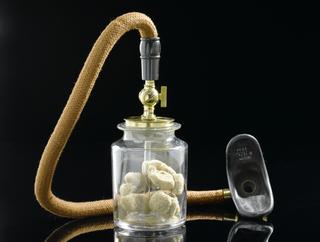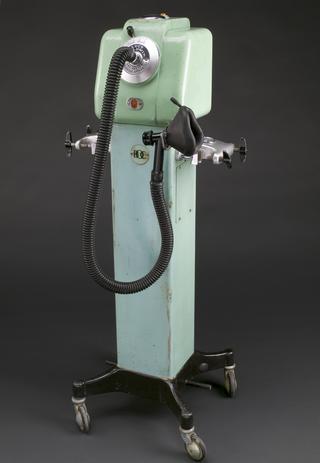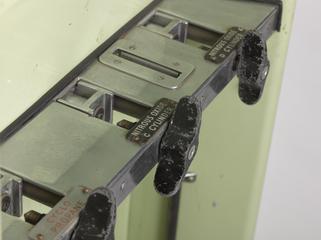
Shipway-type apparatus for anaesthesia, London, England, 1916-1925
- maker:
- Mayer and Meltzer
















Shipway type intratracheal apparatus for warm ether and chloroform anaesthesia, late 1916 version, by Mayer & Meltzer, London, 1916-1925.
This simple anaesthetic apparatus was designed to deliver a combination of ether and chloroform which had been pre-warmed by means of a water bath which is built into the base. The technique was developed by English physician, Sir Francis Shipway (1875-1968), a leading specialist in anaesthesia. He believed that traditional methods, where the inhaled vapours would be cooler, could lead to patients experiencing low body temperatures and lung complications, including pneumonia.
Another innovation was that instead of a mask, the anaesthetic was administered via a long tube inserted down into the patient’s trachea (windpipe). Introduced in 1916, such highly portable devices were used by medical personnel during the First World War. Here, the long endotracheal tube proved particularly useful for patients with severe facial injuries, where a standard anaesthetic face mask couldn’t be fitted. If necessary, the tube could also be inserted via the nose.
Details
- Category:
- Anaesthesiology
- Collection:
- Sir Henry Wellcome's Museum Collection
- Object Number:
- A625543
- Measurements:
-
overall: 195 mm x 280 mm x 380 mm,
overall (as displayed): 283 mm x 432 mm x 382 mm,
- type:
- inhaler




